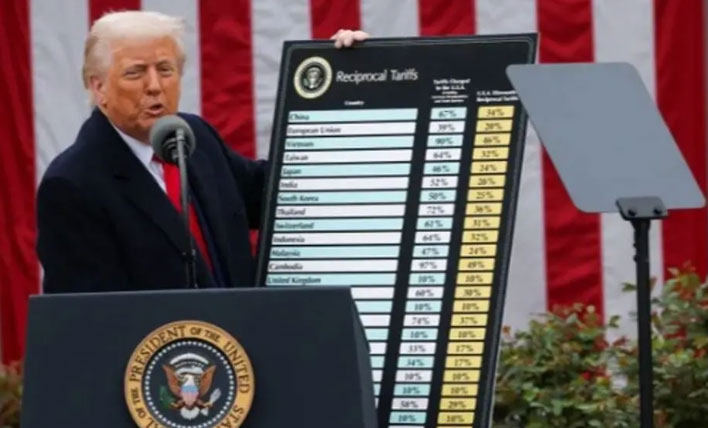With a stroke of the pen, US President Trump finalized his latest tariff schedule, just hours before the deadline.
On the evening of July 31st, he signed an executive order fully advancing the so-called "reciprocal tariffs" into a new phase.

This tariff list will officially take effect at midnight on August 7th. According to the latest plan, tariffs on most countries and regions will be raised to 15%. Some major trading partners have secured lower rates in exchange for signing agreements. The UK, Japan, South Korea, and the EU pledged to invest in and open their markets in the US, resulting in tariffs being reduced to 10%-20%. Mexico also secured a 90-day suspension of tariff escalation.
For countries that have not made sufficient concessions to the US in recent negotiations or have been identified by the White House as having trade imbalances, the figures on the list are stark and direct: 35% for Canada, 50% for Brazil, and over 40% for Syria, Laos, and Myanmar. This moment signals the erection of new barriers.
◆ Highest Tariffs Since 1933
A recent report from Fitch Ratings states that the new tariffs will raise the effective U.S. tariff rate to 17%, the average paid by U.S. importers.
Few Americans today have ever seen such high effective tariffs.
The Yale University Budget Lab stated that this means the United States will be implementing the highest tariffs since the 1933 Smoot-Hawley Tariff Act, which exacerbated the Great Depression and nearly shut down international trade.
Just last year, the effective tariff rate on U.S. imports was only 1.2%, remaining low for decades.
It was this long-standing low tariff environment that enabled American companies to manufacture overseas and ship back home at low cost. But now, the sharp increase in tariffs is reshaping the cost structure of cross-border production and trade.
Eswar Prasad, a professor of trade policy at Cornell University, told the New York Times that this was "a dark day in the history of global trade integration." "Trump has decisively and irreversibly struck a heavy hammer at the rules-based global trading system, shattering it into pieces that will be difficult to reassemble for a long time to come," he said.
◆ American Companies Become the Largest "Taxpayers"
For businesses, this tariff schedule is not just a piece of policy but a direct cost bill. U.S. Treasury Department data shows that tariff revenue soared to $27 billion in June this year, nearly four times the same period last year. Bloomberg and The Wall Street Journal both point out that the majority of tariff costs are borne directly by U.S. importers—the price reductions in exporting countries are limited and cannot offset the tax burden.
From autos to daily necessities, American companies are already absorbing the costs. Ford's latest financial report raised its estimated cost of tariffs to $800 million. Hasbro, the U.S. toymaker, said tariffs will result in an additional $60 million in expenses. Procter & Gamble has warned that it will raise prices on a quarter of its products starting in August.
Retail giants Walmart and Target are currently relying on inventory reductions to stabilize prices, but they frequently use terms like "price adjustments" and "strategic pricing" in their financial reports, avoiding outright "price increases" to ease consumer expectations. However, a New York Fed survey shows that this buffer is rapidly eroding—approximately 70% of manufacturing companies and 50% of service companies have already begun some price increases, but less than half have fully passed on the impact.
For now, American consumers haven't felt the impact clearly, but with the implementation of the new tariffs, this defense will be overwhelmed.
"Merchants can only hold out for so long," said Price, president of the Footwear Wholesale and Retail Association of America.
Andrew Wilson, deputy secretary-general of the International Chamber of Commerce, warned that as inventories are depleted, tariff-induced inflation will fully emerge between the fourth quarter of this year and the first quarter of next year. This lag is likely to exacerbate the steep rise in prices in the future.
Fitch also warned that although the current impact on the US domestic economy is smaller than expected, there are signs that the new tariffs are reigniting inflation and are beginning to drag down economic growth.
Ostensibly, the tariffs are aimed at foreign exporters, but in reality, the initial impact is falling on the US mainland—eroding corporate profits, undermining market confidence, and causing some companies to cut investment and delay hiring. Consumers will sooner or later pay the price for this policy.
From 1933 to 2025, the United States has once again reached historic highs in tariffs. This time, however, it's American businesses and consumers who foot the bill.
When this tariff list is fully implemented, the bill will be felt in every American household in a more tangible way.




